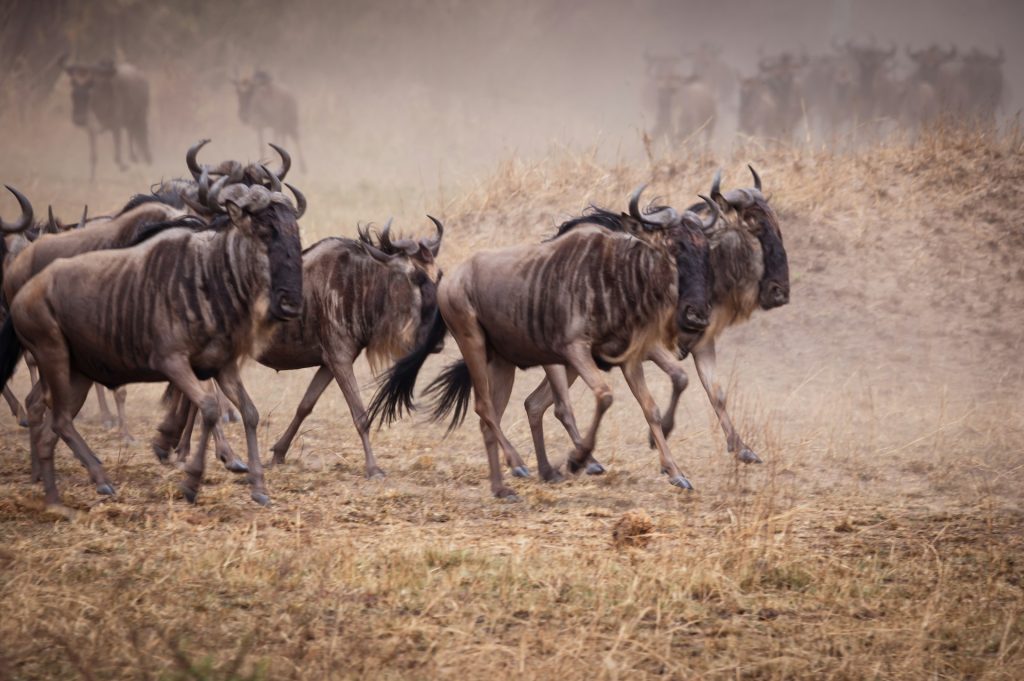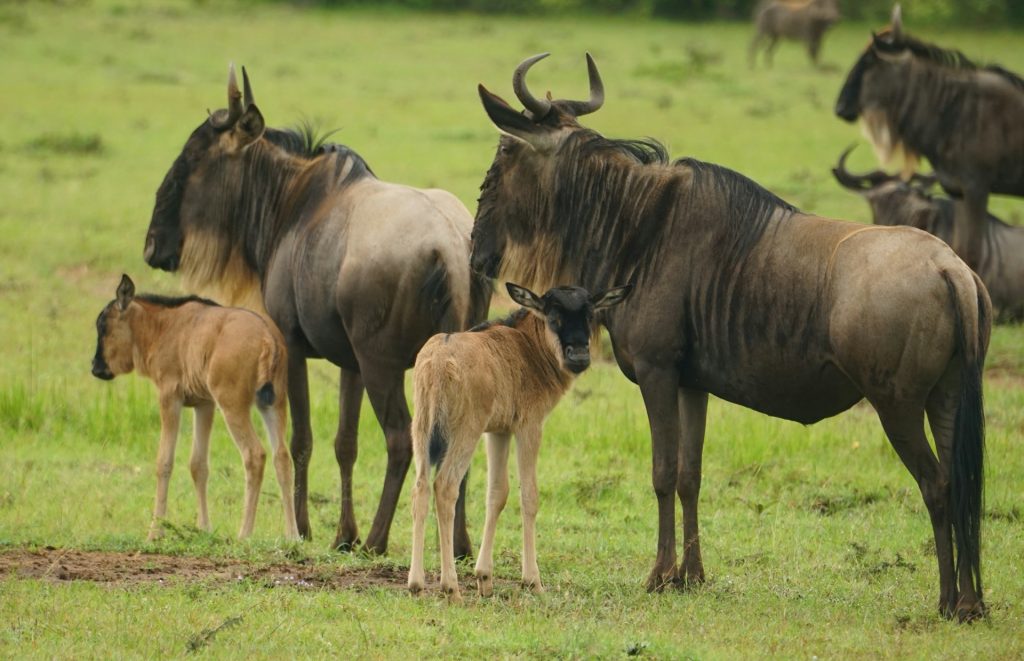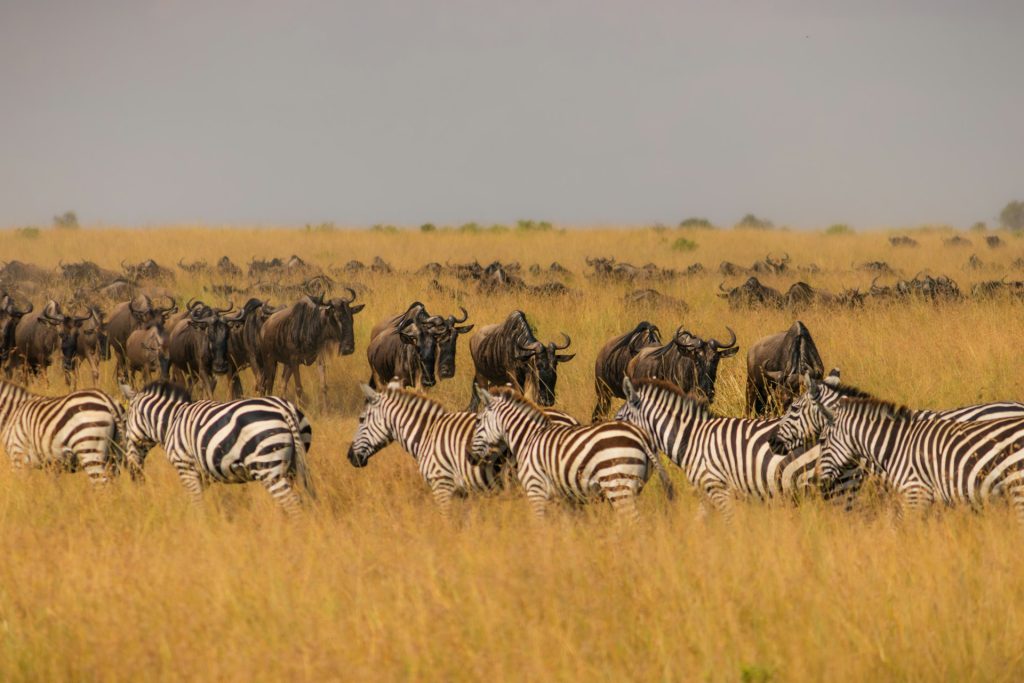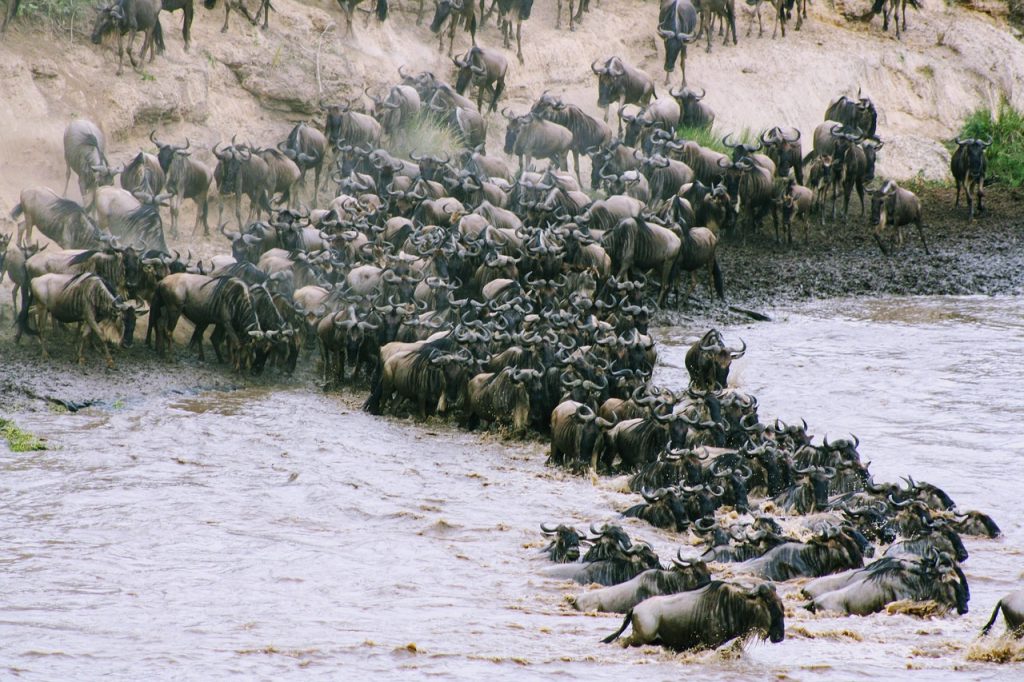The Great Wildebeest Migration is one of the most spectacular wildlife events on Earth, with millions of wildebeest, zebras, and gazelles making their way across the Serengeti and Masai Mara. The migration follows a cyclical pattern that spans the year, with different phases offering unique wildlife experiences. Our Tanzania Migration Calendar helps you plan the perfect time to witness this breathtaking phenomenon.
Each month offers different opportunities to see the migration at its best, whether you’re watching dramatic river crossings or experiencing the calving season.

Calving Season
The wildebeest and other herbivores give birth in the southern Serengeti, with over 8,000 calves born every day. This is an excellent time to see newborns and predators like lions and cheetahs taking advantage of the vulnerable young animals. The plains are lush and green, making this a beautiful time for a safari.

The Wet Season
This is the peak of the wet season, with heavy rains making some roads impassable. While the migration starts to move north, this is not the most ideal time for a safari as many animals are spread out across the Serengeti. However, the rain brings lush landscapes and fewer tourists, so it can be an excellent time for a quieter, off-the-beaten-path safari.
Heading North
By June, the wildebeest and zebras begin moving toward the central and northern Serengeti in search of fresh grazing areas. This marks the beginning of one of the most exciting phases—the river crossings. The Grumeti River is the main crossing point, where thousands of wildebeest face dangerous crocodiles as they try to cross. It’s a thrilling spectacle to witness.

River Crossings in the Northern Serengeti
This is the most dramatic time to visit. The wildebeest make their way across the Mara River into Kenya’s Masai Mara. The crossings are often dangerous, with predators like crocodiles and lions waiting for an opportunity. The action is intense, and this period is considered the peak of the migration, offering some of the most dramatic wildlife viewing.
Mara River and Southern Serengeti
After crossing into the Masai Mara, the wildebeest start to head back south to the Serengeti. The herds gather near the Mara River for the return crossing. The action is still intense, though the crowds begin to thin out as the migration heads back toward the Serengeti. The plains start to dry up, signaling the end of the migration cycle.

Return South
As the rains begin, the wildebeest and other herbivores start moving back to the southern Serengeti. This is a quieter time for safaris, but still a great opportunity to witness the migration’s final stages before the cycle starts again. The green grasslands return, setting the stage for the new calving season in January.
This calendar provides the best times to experience specific migration events, ensuring that your Tanzania safari aligns with your wildlife interests. Whether you’re after the drama of the river crossings or the peaceful sight of calves being born, planning around these months will help you capture the magic of the Great Migration
© 2025 Tanzania Glimpse Expeditions